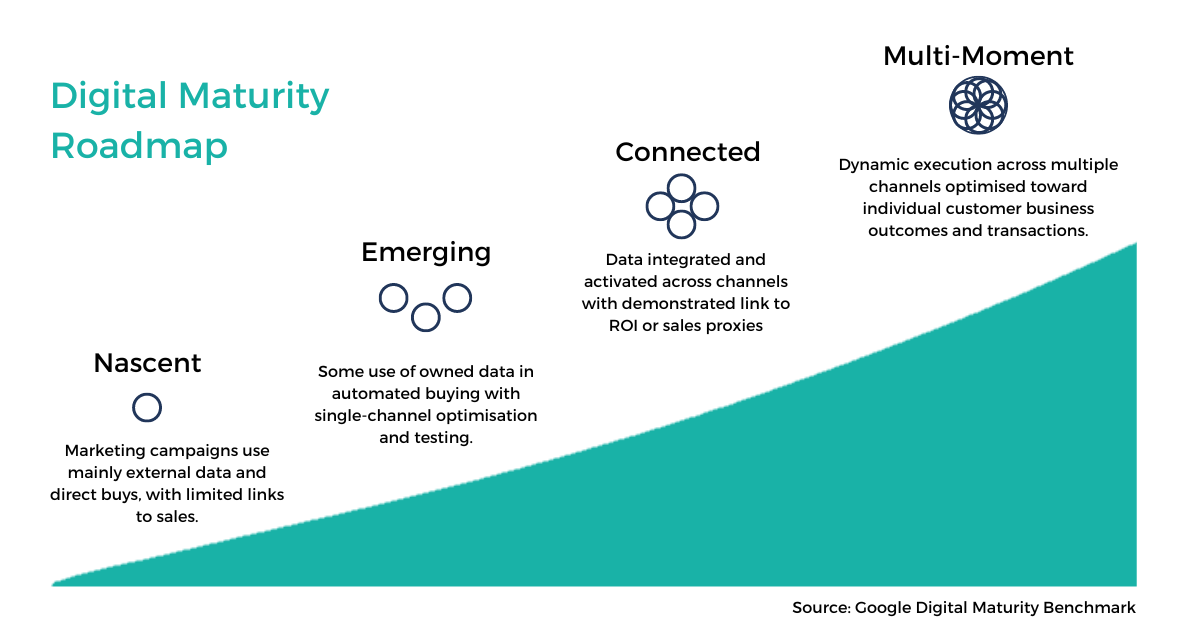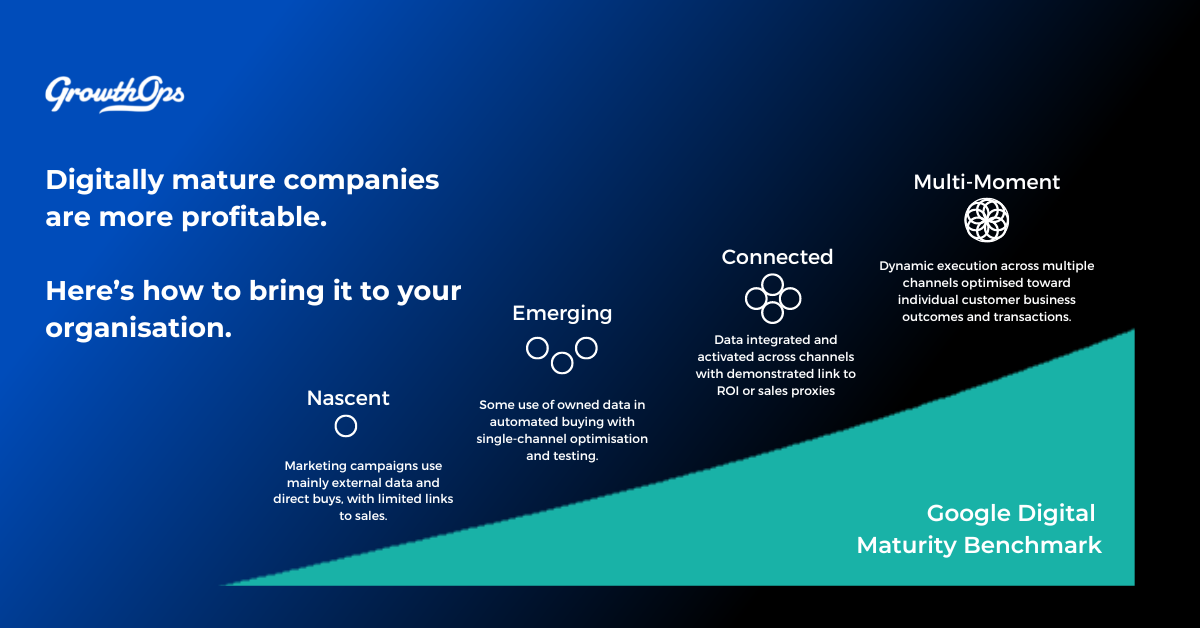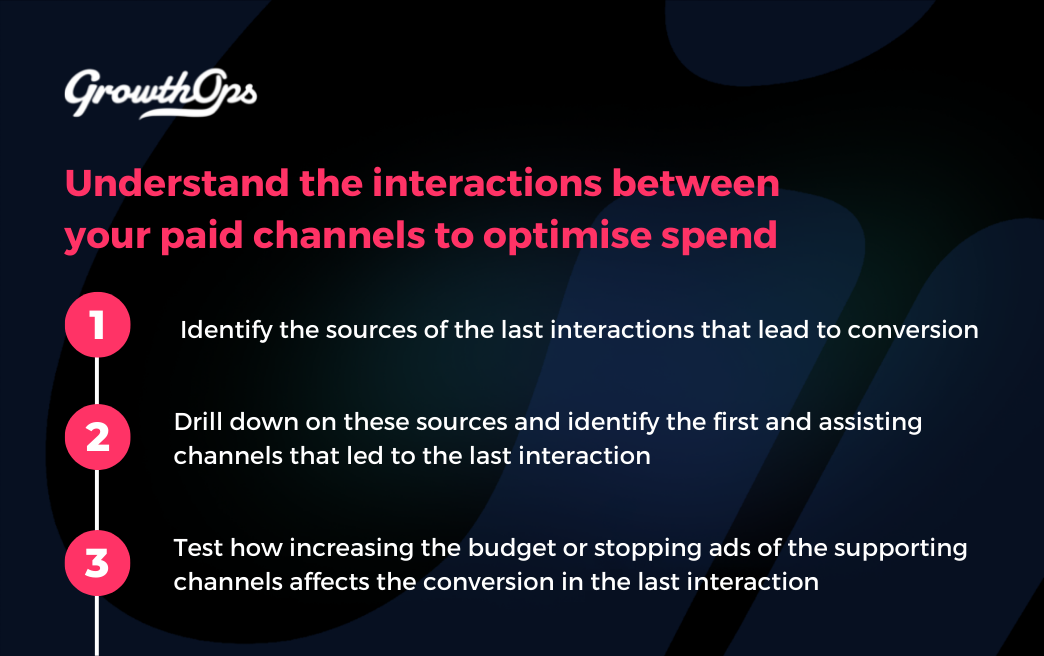From buzzword to business necessity, digital transformation continues to be a top priority for many CEOs. According to Gartner’s CIO Agenda 2023, four out of five CEOs are increasing digital technology investments to counter current economic challenges like inflation and resource scarcity.
But getting value from the switchover remains to be no easy feat. A McKinsey study reported that 70% of digital transformations of complex, large-scale change programs fail. The reasons include a lack of employee engagement, inadequate management support, poor or nonexistent cross-functional collaboration, and a lack of accountability.
One thing is common, these all describe the level of engagement and behavior the organization has towards digital transformation, simply put, their Digital Maturity.
What is Digital Maturity and how is it different from Digital Transformation?
Organizations embark on digital transformation to make processes faster, easier, and more convenient which should then lead to improved customer delivery, lower costs, and ultimately, better profitability.
Success relies on maturity. Deloitte reports that 43% of highly digital mature companies have significantly higher net profits than their industry averages.
Here are some of the top reasons why companies should shift their lenses to digital maturity:
1. Talent retention and magnet
Digitally mature organizations have a clear-sighted vision of what their businesses can be and clearly defined initiatives on how to achieve them. This builds employee trust, an important element in talent retention.
With digital maturity comes a developed culture of collaboration, rather than followership which breathes creative energy into employees. This combined with the right technology and support, employees remain actively engaged with their work resulting in better productivity and job satisfaction.
And when it comes to talent acquisition, an MIT Sloan Management Review showed that 70% of employees prefer to work for a digitally enabled company for all age groups, and 80% for digital leaders.
Furthermore, as employees are embracing flexible work, organisations that have systems in place to allow work democratization become more preferred.
2. On-time technical delivery
A digitally mature organization is both digitally intensive and transformation management intensive.
When two are both in place, technical projects are well maintained by staff and the software available, allowing for faster delivery or responses to technical issues. A study suggests that 61% of digitally mature organizations rarely or never have projects or initiatives delayed due to a lack of technical resources.
3. Reliable scale
Speed is the currency in today’s digital age. The higher the level of maturity, the faster companies can approve, test, and implement new technologies as the market changes. MIT Sloan Management Review reports that companies that are mature in either Digital Intensity or Transformation Management Intensity outstrip industry competitors along different dimensions of financial performance.
But transformation is not instant and the skills it requires are much more complex than expected. This is where strategic digital transformation partnerships become mission-critical. From building a dependable data architecture to implementing technology and upskilling your workforce, having a long-term partner can help speed up your time to impact. This is on top of opening new capabilities while derisking your strategy.
The Path to Digital Maturity
The path to digital maturity starts with asking the right question which is “Where am I exactly on the path to Digital Maturity?”.
And to answer that, we have to look at a Digital Maturity Model (DMM) to help you identify your level. Boston Consulting Group and Google developed one of the commonly known DMM covering 4 archetypes as follows:

1. Nascent
“Marketing campaigns use mainly external data and direct buys, with limited links to sales.”
At this stage, there is little to no collection of data and a lack of organisational collaboration. To move to the next level, executive buy-ins for a reliable data collection process are needed.
2. Emerging
“Some use of owned data in automated buying with single-channel optimisation and testing.”
At this stage, data is collected democratically across units and consideration for technology investment is starting. To move to the next level, a need for data sharing with proper documentation across teams is needed.
3. Connected
“Data integrated and activated across channels with demonstrated link to ROI or sales proxies.”
At this stage, there is a data-sharing system across teams that prescribes insights to deliver better revenue. There are efforts to integrate all channels, both online and offline into a single source of truth.
4. Multi-Moment
“Dynamic execution across multiple channels optimised toward individual customer business outcomes and transactions.”
At this stage, there is mastery in data collection across all channels and touchpoints and data regularly prescribes how to impact revenue. From data-informed to data-led, the organization uses cloud optimisation strategy for unbothered delivery, leverages personalisation, and has first-party data in place. At this stage, there is more focus on technology as it’s expected that people transformation should’ve taken place already during the previous stages.
80% People Transformation, 20% Technology
Digital Maturity is 80% people transformation and 20% technology. It starts with reliable and resilient leadership that impacts not just engagement but the overall digital culture of the organization. Once that is established, technology adoption becomes much easier.
Easier said than done, it pays to have experts on your side who have done it before. GrowthOps has the right tech stack to support automation and data collection and a high-level change management approach based on regional, project, and market-level objectives and requirements.
Click here to learn more about GrowthOps Digital Transformation and Change Management Solutions.


.gif)

.png)